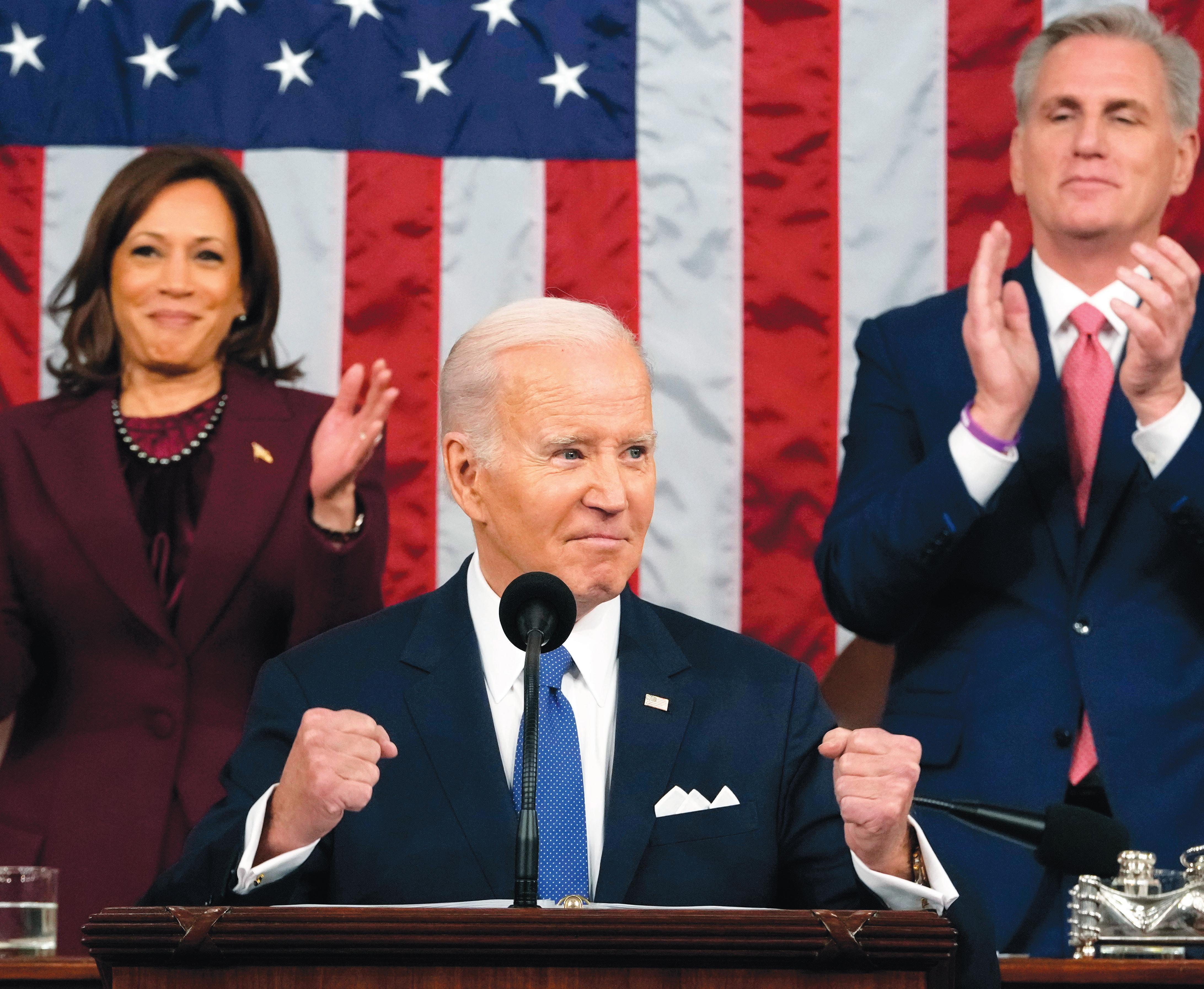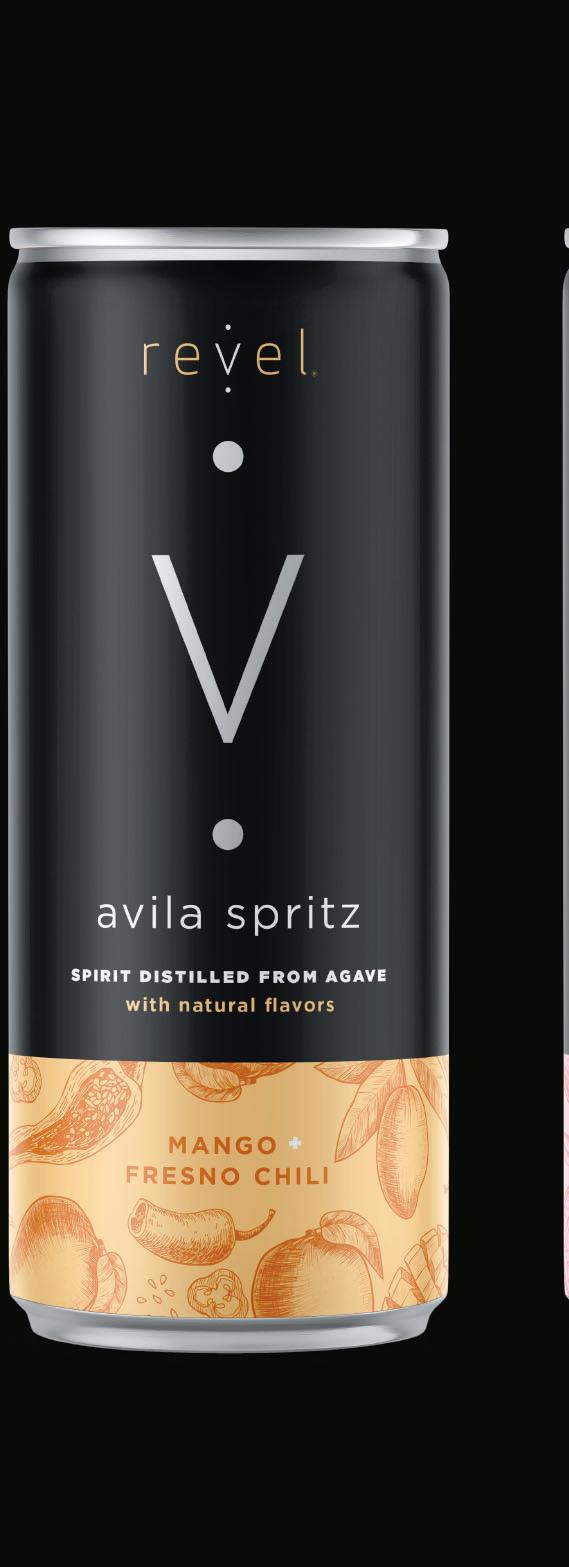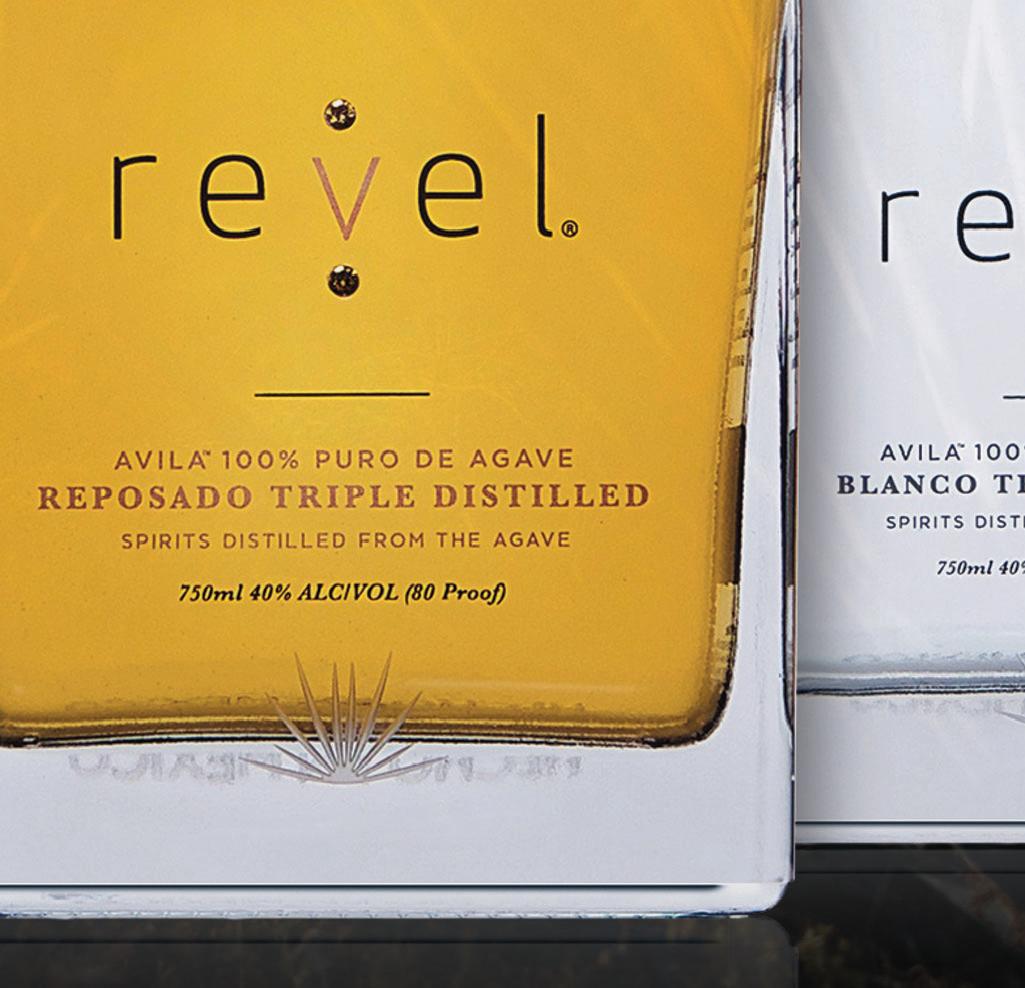STATE OF UNION BIDEN: ‘FINISH THE JOB’
By Zeke Miller, Seung Min Kim and Lisa Mascaro Associated Press
WASHINGTON (AP) — President Joe Biden exhorted Congress Tuesday night to work with him to “finish the job” of rebuilding the economy and uniting the nation as he delivered a State of the Union address aimed at reassuring a country beset by pessimism and fraught political divisions.
In his 73-minute speech, Biden sought to portray a nation dramatically improved from the one he took charge of two years ago: from a reeling economy to one prosperous with new jobs; from a crippled, pandemic-weary nation to one that has now reopened, and a democracy that has survived its biggest test since the Civil War.
“Folks, the story of America is a story of progress and resilience. Of always moving forward. Of never, ever, giving up,” Biden said. “It’s a story unique among all nations. We’re the only country that has emerged from every crisis we’ve ever entered stronger than when we got into it.”
“We’re not finished yet by any stretch of the imagination,” he declared.
The backdrop for the annual address was markedly different from the previous two years, with a Republican speaker now sitting expressionless behind Biden and newly empowered GOP lawmakers in the chamber sometimes shouting criticism of him and his administration.

As Biden, 80, prepares for a likely reelection bid, he sought to prove to a skeptical nation that his stewardship has delivered results both at home and abroad. He highlighted record job creation during his tenure as the country has emerged from the COVID-19 pandemic, and pointed to areas of bipartisan progress in his first two years in office, including on states’ vital infrastructure projects and high-tech manufacturing. And he said, “There is no reason we can’t work together and find consensus on important thing in this Congress as well.”
“The people sent us a clear message. Fighting for the sake of fighting, power for the sake of power, conflict for the sake of conflict, gets us nowhere,” Biden said. “That’s always been my vision for the country: to restore the soul of the nation, to rebuild the backbone of America — the middle class — and unite the country.”
“We’ve been sent here to finish the job!”
But the challenges for Biden are many: economic uncertainty, a wearying war in Ukraine, growing tensions with China and more. Signs of past trauma at the Capitol, most notably the Jan. 6, 2021 insurrection, were unavoidable: A large fence encircled the complex, and lawmakers and those in attendance faced tighter-than-usual security.
From the start, the heightened partisan divisions were clear. Democrats — including Vice President Kamala Harris — jumped to applause as Biden began his speech. New Republican House Speaker Kevin McCarthy, though he had greeted the president warmly when he entered the chamber, stayed in his seat.
The speech came as Biden has shifted his sights after spending his first two years pushing through major bills such as the bipartisan infrastructure package, legislation to promote high-tech manufacturing and climate measures. With Republicans now in control of the House, and even meeting the government’s fiscal obligations far from certain, Biden is turning his focus to implementing those massive laws and making sure voters credit him for the improvements.
Instead of flashy proposals, the president offered an encouraging assessment of the nation’s condition, declaring that two years after the Capitol attack, America’s democracy was “unbowed and unbroken.”
The president took to the House rostrum at a time when just a quarter of U.S. adults say things are headed in the right direction, according to a new poll by The Associated Press-NORC Center for Public Affairs Research. About threequarters say things are on the wrong track. And a majority of Democrats don’t want Biden to seek another term. He sought to confront those sentiments head-on.
“You wonder whether the path even exists anymore for your children to get ahead without having to move away,” Biden said. “I get that. That’s why we’re building an economy where no one is left behind. Jobs are coming back, pride is coming back because of the choices we made in the last several years.”
Biden on Wednesday was to travel to Wisconsin, as he and members of his Cabinet embark on a two-day, 20-state blitz to highlight economic progress in his first two years in office.
Arkansas Gov. Sarah Huckabee Sanders, who gained a national profile as former President Donald Trump’s press secretary, delivered the Republican response to Biden’s speech. She focused much of her remarks on social issues, including race in business and education and alleged big-tech censorship of conservatives.
“While you reap the consequences of their failures, the Biden administration seems more interested in woke fantasies than the hard reality Americans face every day,” she said. “Most Americans simply want to live their lives in freedom and peace, but we are under attack in a left-wing culture war we didn’t start and never wanted to fight.”
“The choice is between normal and crazy,” she added. With COVID-19 restrictions now lifted, the White House and legislators from both parties invited guests designed to drive home political messages with their presence in the House chamber. The mother and stepfather of Tyre Nichols, who was severely beaten by police officers in Memphis and later died, were among those seated with first lady Jill Biden. Other Biden guests included the rock star/ humanitarian Bono and 26-year-old Brandon Tsay, who disarmed a gunman in last month’s Monterey Park, California, shooting.
“There’s no words to describe the heartache and grief of losing a child,” Biden said after introducing RowVaughn and Rodney Wells to a standing ovation. He called on Congress to “rise to this moment” to make meaningful change in policing.
Biden drew bipartisan applause when he praised most law enforcement officers as “good, decent, honorable people” but added that “when police officers or police departments violate the public’s trust, they must be held accountable.”
Members of the Congressional Black Caucus invited family members of those involved in police incidents, as they sought to press for action on police reform in the wake of Nichols’ death.
Biden, not known for his lofty oratory, appeared relaxed and confident as he delivered his address. He casually adlibbed jokes and rejoinders, seeming to feed off the responses from Democratic lawmakers who frequently stood with thunderous ovations and playfully engaging with Republican critics.
Addressing Republicans who voted against the big bipartisan infrastructure law, Biden said he’d still ensure their pet projects received federal support. “I promised to
be the president for all Americans,” he said. “We’ll fund these projects. And I’ll see you at the ground-breaking.”
Occasional Republican heckling — some drawing hushes from McCarthy — reflected the newly empowered GOP that is itching to undo many of Biden’s achievements and vowing to pursue a multitude of investigations — including looking into the recent discoveries of classified documents from his time as vice president at his home and former office.
Though he pledged bipartisanship where possible, Biden also underscored the sharp tensions that exist: He discussed GOP efforts to repeal the Democrats’ 2022 climate change and healthcare law and their reluctance to increase the federal debt limit, the nation’s legal borrowing authority that must be raised later this year or risk default.
“Instead of making the wealthy pay their fair share, some Republicans — some Republicans want Medicare and Social Security to sunset. I am not saying it’s a majority,” Biden said. As GOP lawmakers in the audience pushed back, Biden responded: “We’re not going to be moved into being threatened to default on the debt if we don’t respond.”
Still, some Republicans refused to back down, with Rep. Marjorie Taylor Greene, R-Ga., and others jumping to their feet, some yelling “Liar!”
The president answered back, “Stand up and show them: We will not cut Social Security! We will not cut Medicare!”
As Republicans continued to protest his accusations, he said, “We’ve got unanimity.”
While hopes for large-scale bipartisanship are slim, Biden reissued his 2022 appeal for Congress to get behind his “unity agenda” of actions to address the opioid epidemic, mental health, veterans’ health and cancer.
In fiery refrains, Biden said the phrase “finish the job” 13 times, challenging lawmakers to complete the work of his administration on capping insulin costs for all Americans, confronting climate change, raising taxes on the wealthy and corporations and banning assault-style weapons. But on all of those fronts, the divided government is even less likely to yield than the Congress under sole Democratic control.
The speech came days after Biden ordered the military to shoot down a suspected Chinese spy balloon that flew brazenly across the country, captivating the nation and serving as a reminder of tense relations between the two global powers.
“Make no mistake: As we made clear last week, if China’s threatens our sovereignty, we will act to protect our country,” Biden said. “And we did.”
Last year’s address occurred just days after Russia launched its invasion of Ukraine and as many in the West doubted Kyiv’s ability to withstand the onslaught. Over the past year, the U.S. and other allies have sent tens of billions of dollars in military and economic assistance to bolster Ukraine’s defenses. Now, Biden must make the case — both at home and abroad — for sustaining that coalition as the war drags on.
“Together, we did what America always does at our best,” Biden said. “We led. We united NATO. We built a global coalition. We stood against Putin’s aggression. We stood with the Ukrainian people.”
Associated Press writer Fatima Hussein contributed to this report.
 Jacquelyn Martin, Pool
President Joe Biden delivers the State of the Union address to a joint session of Congress at the U.S. Capitol, Tuesday, Feb. 7, 2023, in Washington, as Vice President Kamala Harris and House Speaker Kevin McCarthy of Calif., applaud.
Jacquelyn Martin, Pool
President Joe Biden delivers the State of the Union address to a joint session of Congress at the U.S. Capitol, Tuesday, Feb. 7, 2023, in Washington, as Vice President Kamala Harris and House Speaker Kevin McCarthy of Calif., applaud.
Vol. 50 No. 7• The Journal For Community News, Business & The Arts • insightnews.com Vol 50 No 7• The Journal For News, Business & The Arts • insightnews com February 13, 2023 - February 19, 2023 13 2023 - 19 2023 INSIGHT NEWS IS AUDITED BY THE ALLIANCE FOR AUDITED MEDIA TO PROVIDE OUR ADVERTISER PARTNERS WITH THE HIGHEST LEVEL OF MEDIA AS SURANCE. I N S I G H T N E W S I S A U D I T E D B Y T H E A L L I A N C E F O R A U D I T E D M E D I A T O P R O V I D E O U R A D V E R T I S E R P A R T N E R S W I T H T H E H I G H E S T L E V E L O F M E D I A A S S U R A N C E Insight News News
1. That Minnesota governor Tim Walz, meets with representatives of Minnesota Black communities t0 affirms Minnesota’s commitment to prioritize disparities elimination in all aspect of Minnesota governance and administration.
2. That the Governor hold his appointed State Commissioners and the state departments they lead accountable for measurable and reportable processes and strategies to eliminate disparities that exist in and that are supported by policies and procedures of state governance.
3. That the Minnesota Legislature prioritize intentional solution making that can occur when Legislators, Committee Chairs and Committees engage Minnesota’s Black community at the table of decision.
1. Business and Economic Development
Invest now in Black folks and their abilities to create businesses in the community.
An article published by the Brooking Institute stated that the underrepresentation of Black businesses does not come from a lack of will or talent. Rather, the underrepresentation of Black businesses encapsulates a myriad of structural barriers underscoring America’s tumultuous history with structural racism. One of the principal barriers to the growth and development of Black businesses is that Black households have been denied equal opportunities for wealth accumulation. The median Black household’s wealth ($9,000) is nearly one-fifteenth that of non-Black households ($134,520). The article states that 90% of new businesses among all races do not receive any outside investors. Most people use the equity in their homes to start their firms. This is a huge disadvantage to Black folks in Minnesota because of the home ownership gap. Further, the report stated that minority owned businesses experience higher loan denial probabilities and pay higher interest rates than white-owned businesses even after controlling for differences in credit-worthiness, and other factors. Limited access to investment capital in its many forms is inextricably linked to systemic discrimination in lending, housing, and employment. It cripples Black business development.

2. Employment
Invest now in creating employment opportunities for the Black community



In an article published by the Urban Institute, the issue of Black employment was addressed. It stated that, “while many are heralding the drop in the national Black male unemployment rate, which recently fell below 10 percent for the first time in seven years, joblessness remains much higher in many poor African American communities. It stated that for many low-income Black men, finding and keeping work is a constant struggle, never far from their minds. Black job applicants might not even make it into the queue if they have had an encounter with the criminal justice system. Helping Black folks secure steady employment at decent wages will require resources to break down the institutional barriers that separate people from decent job opportunities and to enable Black people to build the skills needed for well-paying jobs
3. Public Safety
Invest now in Public Safety in the Black community.
Public safety exists to protect citizens, organizations, and communities by preventing them from being in danger and guarding their well-being. Abraham Maslow defined safety in his famous “Hierarchy of Human Needs“. He said that to function as a society public safety is needed. He said this safety goes beyond just physical safety but also safety when it comes to health, money, possessions, and family. Less we forget, there’s an Emotional Impact on Public Safety. When folks feel unsafe, it could have major effects on individuals, their loved ones, and the community they live in. Violence has been way to prevalent in the inner cities of Minneapolis and St. Paul. Playgrounds are unsafe, the streets are unsafe, and the shopping malls are unsafe.
4. Housing
Invest now in multiple housing options for the Black community to close the home ownership gap.
Multiple housing options are an important part of any community. It provides a safe and affordable place for people to live and can help reduce poverty and homelessness. However, there are many challenges associated with providing low-income housing, such as limited resources, high demand, and the need to ensure that the housing is safe and secure. Minneapolis has one of the widest homeownership gaps in the country between whites and Blacks.
5. Education Invest now in ensuring that our Black students are educated at the same level as White students.
Dr. Sinclair Grey lll stated that education is without a doubt crucial to the success of our students competing for jobs. Quality education that enforces and reinforces math, science, writing, and cognitive thinking will separate those who desire a prosperous future from those who are simply content with getting by. Yet, in Minnesota, reading test scores for Black students are over 20 points below state average and math test scores are 20 points below state average. Minnesota ranks 50th in the nation for Black students who graduate on time. Minnesota has one of the worst college-readiness gaps in the nation by race and ethnicity – only 25% of Black students are prepared for college. Thus, Black students who attend college must take significantly more remedial courses than their peers as their starting point.
6. Health & Wellness

Invest now in efforts that will impact the health and wellness of the Black community. The Black community is faced with escalating social, economic, and life-style problems, which threaten the life and well-being of current and future generations of Black people in crisis proportion. The rising number of deaths due to heart disease and stroke, homicide and accidents related to substance abuse, AIDS, cancer, and infant mortality are among the leading culprits. They interfere with prospects of longevity and contribute to joblessness, poverty, and homelessness and further complicate the crisis in the Black community. The magnitude of the problems dictates the need for support from the Minnesota State Legislature.

7. Policy


Each member of the legislature, regardless of political affiliation, is involved in setting public policy. These policies should reflect the will of the people and is carried out by those elected to vote. Because of conflicting interests and capacities, some policies have disenfranchised the Black community. There is therefore a need for coherence of interest/capacities in an attempt to pass policies that reflect the needs of the Black community.
Every time another national “quality of life” is broadcast or published about the best places to live in the U.S., Minnesota and the Twin Cities always rank at or near the top. The Atlantic’s Derek Thompson once referred to this as the miracle of Minneapolis.” Likewise, every time those lists are parsed out further, the state and the metro fall all the way to the bottom when it comes to quality of life measures for Black people, or, what some have called the “Two Minnesotas.” But to ensure that all those in our state have the opportunity to thrive, we cannot forget about the communities that have been systematically abused, persistently underrepresented, and long underserved.
Minnesota is now the seventh (7th) worst state in the country for Blacks to live. This dubious recognition alongside the May 2020 murder of George Floyd has brought the State into an era of racial reckoning and has put racial inequity at the center of the national conversation, and Minnesota on the racial map. Today Black folks are more than twice as likely as their white counterparts to live below the poverty line. Additionally, the typical Black household earns just 63 cents for every dollar a typical white household earns, and African American workers are more than twice as likely to be unemployed as white workers.
Using data from the U.S. Census Bureau, 24/7 Wall St. created an index to measure socioeconomic disparities between Black and white Americans to identify the worst states for Black Americans. High on the list of cities that have extremely troubling disparities is Minneapolis-St. Paul. Minnesota’s urban core boast these disturbing rates:
• Black population: 290,210 (8.2% of total)

• Black median income: $36,127 (44.0% of white income)



• Unemployment: 9.2% (Black); 3.2% (white)















• Homeownership rate: 25.2% (Black); 75.5% (white)
• Black poverty rate of 28.3% in the metro area, 5.9% (white)
• Black medium household earn $36,127 a year — the median income among white area households is $82,118.
The profound racial wealth gaps for Blacks in Minnesota is structural, as they are across the United States. Structural racism is inherent in intersecting and overlapping institutions, policies, practices, ideas, and behaviors that give resources, rights, and power to white people while denying them to others. The roots of racial wealth gaps can be traced back centuries through racialized public and private policies and practices, which fueled economic boosts to white families that allowed for intergenerational wealth transfers and created barriers to Black families. Past discrimination and injustices accumulate and build across generations, making it hard for communities that have been harmed to catch up. As one example, the losses from unpaid wages and lost inheritances to Black descendants is estimated at around $20 trillion today. The NAACP Twin Cities 2019 Economic Inclusion Plan states: “There are two Minnesota’s, one white, one Black – separate and unequal.”
Data from the 2019 Prosperity Now Scorecard shows that 40% of Americans are liquid asset poor—meaning they do not have enough in savings to make ends meet at the poverty level for three months ($6,275 for a family of four in 2018). This problem is even more stark when disaggregated by race. 31.7% of white households are liquid-asset poor compared to over 62% of Black households.
Recent trends in Hennepin and Ramsey Counties are moving in the wrong direction. The share of Black families who own a home has declined from 31 percent in 2000 to 21 percent in 2018. The racial homeownership gap in the Twin Cities is the highest in the nation and has only widened over the past two decades, especially in neighborhoods where investors have acquired hundreds of single-family homes to now use as rentals, according to a June 2021 report from the Urban Institute.
Page 2 • February 13 2023 - February 19 2023 13, 2023 - 19, 2023• Insight News insightnews.com BLACK MINNESOTA PRIORITIES • Equity in distribution and stewardship of resources • Advancing innovation and collaboration in problem solving • Upending traditional systems • Bringing the voices of community front and center THE URGENCY OF NOW! • Minnesota’s record budget surplus enables addressing disparities in a meaningful way •We demand genuine inclusion in the resource allocation process •We must outline, up front, what this inclusion looks like THREE STEPS BACKGROUND INVEST NOW!
On January 30th, 2023, The Brooklyn Park City Council held a special meeting and took a formal action regarding the designation of the official newspaper. The council instructed the staff to work more on other newspaper options. It said it would make its decision later on after two months.
Sun Post has been the city’s official newspaper for many years. It has no specific cultural focus and has a circulation of 4,447 Brooklyn Park residents. It is freely delivered to 4,003 residents, has 11 online subscribers who get it at a fee, and has 21 weekly drop points around the city where the residents can get Sun Post freely without a subscription.
However, Brooklyn Park spent over $20,000 with


this paper in 2022. “We looked at how much we spent in 2022… and it came with a price tag of about $20,000,” said city staff in their presentation to the Council. Therefore, expanding the public notices to other outlets requires a conversation about funding, they said.
The Other Considered Newspapers
There were different contenders for the status of Brooklyn Park’s official newspaper. They include; Mshale; This is an award-winning English language newspaper focusing on the African immigrant community in Minnesota and the surrounding states. The Hmong Times Newspaper; mainly features the Hmong community and other Asians providing them with current news and lifestyle information.

Minnesota SpokesmanRecorder; This is the oldest Black-owned newspaper with paid subscriptions. It is a weekly newspaper with an established website and an estimated weekly readership of 40,000, Twin Cities wide.. The Asian-American Press; lacks a print newspaper, and is on-line only, and this rules it out.

Latino News Outlets; They are mostly published in Spanish, meaning they don’t qualify. However, there is one with limited circulation in Brooklyn Park, Latino American Today which is published in English. However, it has a limited distribution. Insight News which reached out to the council early this year, contending for the status of the official newspaper. Insight News’ major focus is the Black community. Insight provides free subscriptions,
and residents can access Insight copies both digitally and physically. Notably, Insight has an audited circulation is at 35,000 and the paper is distributed on newsstands in St Paul, Minneapolis, and the suburbs around. The publication boasts a readership of 105,000 based on a pass-along ratio of 3:1, meaning three readers for every paper. In Brooklyn Park, the newsstand distribution of over 3,000 copies means a reach of 15,000 Brooklyn Park residents each week.
The Decisions Made
The communications manager shared the staff recommendations on the designation of Sun Post as the official newspaper.
“As it stands right now, our staff recommendation is to retain the Sun Post as
Insight News Sports is back! The new home for
By Leahjean M. Denley Sports Editor
I’m Back!!! And super excited to be rejoining my Insight News family as Sports Editor.
It’s been about 20 years since I last appeared here and had the honor and opportunity to share my thoughts about local and national sporting news with all of you. In those 20 years… oh my… In addition to a slight name change, so much has happened since then! My perspective as a sports professional has grown exponentially and is much more multi-dimensional.
I look forward to sharing those experiences, as well as interviews with newsworthy celebrities, sports figures, and cultural icons in the coming weeks. Here’s a snapshot of what you can expect from CoachLeahTM and Insight News – Sports. What is
The Mayo Clinic is widely regarded as one of the most prestigious and well-respected medical institutions in the United States. It is a destination for patients seeking complex medical treatment and attracts patients from all over the world. I was fortunate enough to utilize their resources and world-class care for my mother when she was diagnosed with cancer in 2008. While cancer fatalities are uniquely common in Black communities, we continue to experience the highest rate of cancer deaths and high rates of chronic illness. Therefore, high-quality patient care, cutting-edge medical research, and expert specialists have become undeniably necessary.
However, not everyone can go to the Mayo Clinic to receive treatment. So, for the 60% of Minnesotans who suffer from chronic illness, many must take advantage of alternative care and treatment options. Moreover, chronic illness occurs more often within our Black, Hispanic, and Native American communities, which


are all up to two times more likely than White counterparts to have major long-term conditions. While chronic illnesses are often complicated when it comes to treatment options, specialty medications are often recommended to treat rare or complex medical conditions. These have grown by leaps and bounds over the past 10 years—which is great news for people suffering from chronic illnesses like cancer, ALS, cystic fibrosis, or rheumatoid arthritis. Newer treatments help manage symptoms and can extend life expectancy by close to a decade. But just like any new
PhD
A Longer version of this was published on Medium (https:// bit.ly/zoraonmymind), Jan 25, 2023
I count myself among that generation of Black anthropologists and writers strongly influenced by Zora’s example. I cannot say that I followed Zora’s path consciously.

Nor can I say for sure now whether it was Zora who brought me to Florida to teach in the anthropology department at the University of Florida, or whether it was the warm weather, and the fact that azaleas bloom madly in the spring, and the Spanish moss drips off the oak trees lending a delicate beauty to the Florida landscape.” Irma McClaurin,
From “Belle Lettres: ‘Dear Langston, Love Zora’”, FlaVour: Black Florida Life &
Style, Autumn 2000. It is hard to believe that I penned those words and published the article it comes from 23 years ago. For over the last three decades, I have conducted research on Zora Neale Hurston (ZNH); directed the Zora Neale Hurston Diaspora Research Group when I was tenured faculty at the University of Florida (1995-2006); written both academic and nonacademic articles and blogs about her; done radio commentary (https:// bit.ly/zorafhc ), and delivered talks and keynote presentations about her (https://bit.ly/ HurstonHorizon). Suffice it to say that Zora has been on my mind for a VERY LONG time.
Teaching Zora My love affair with Zora began in the late 1970s when I designed and taught Black/African American literature courses. All before I ever thought of becoming an anthropologist. I recall taking a road trip from Amherst, MA to South


insightnews.com Insight News • February 13 2023 - February 19 2023 13, 2023 - 19, 2023 • Page 3
Insight News –Sports? Everything locally and nationally that can be imagined (or even reimagined) as important to you will be covered – from grassroots youth athletics and activities HUSSEIN 4 Courtesy of Coach Leah “CoachLeah”, Leahjean M. Denley, MBA Founder/President/CEO The Frazier Foundation, Inc.’s Institute for AALAX, LLC BROOKLYN PARK 4
“CoachLeah’s After the Whistle” COACH LEAH 4 Brooklyn Park looks at cultural relevance in deciding award for official newspaper contract Brooklyn Park city council member Boyd Morson Culture and Education Editor By Irma McClaurin,
Representative Samakab Hussein House District 65A Minnesota Legislature must prioritize the well-being of those with chronic illnesses Zora Neale Hurston on My Mind: ‘Claiming Her Space’ Beyond the Shadows of Anthropology HURSTON 6 Photo by Randall MacLowery, Producer Author (L) with Tracey Strain (Director) on set of PBS American Experience “Zora Neale Hurston: Claiming a Space.”
Brooklyn
Guest Commentary By Samakab Hussein
Insight News Insight News Vol 50 No 7• The Journal For Community News, Business & The Arts • insightnews com Vol. 50 No. 7• The Journal For Business & The Arts • insightnews.com February 13, 2023 2023 - February 19, 2023 - 2023 I N S I G H T N E W S I S A U D I T E D B Y T H E A L L I A N C E F O R A U D I T E D M E D I A T O P R O V I D E O U R A D V E R T I S E R P A R T N E R S W I T H T H E H I G H E S T L E V E L O F M E D I A A S S U R A N C E INSIGHT NEWS IS AUDITED BY THE ALLIANCE FOR AUDITED MEDIA TO PROVIDE OUR ADVERTISER PARTNERS WITH THE HIGHEST LEVEL OF MEDIA AS SURANCE. BHM America’s always had Black inventors –even when the patent system explicitly excluded them PAGE 5 I2H New rules would limit sugar in school meals for first time PAGE 6
By Vanessa Muthama Contributing Writer
Park mayor Hollies J. Winston
Minnesota moves toward 100% carbon-free electricity by 2040
By Steve Karnowski Associated Press
ST. PAUL, Minn. (AP) —
Minnesota utilities would be obligated to transition to 100% carbon-free electricity by 2040 to step up the fight against climate change under a bill speeding through the Legislature.
The bill was slated for a final vote on the Senate floor Thursday night after passing the House 70-60 last week. It’s a top priority for Democrats, who control both chambers, and for Democratic Gov. Tim Walz, who has made it an important part of his climate agenda.
“Climate change is coming and has been here, and it affects everything we do,” the lead author, Democratic Sen. Nick Frentz, of North Mankato, said at the start of a debate that was expected to last well into the night.
The Senate’s two meteorologists — Democratic
Brooklyn Park Park
From 3 From
our official newspaper.” The communications manager went on to explain, “Sun Post is currently the official newspaper and unless something changes, they will remain so.”
“We are also interested in exploring further partnerships with Sun Post.” This is an attempt to diversify the drop sites, and serve the residents better. The communications
Hussein
From 3
technology, the cost is steep so patients who stand to benefit the most from these new treatments are often left in a lurch.
Until 2018, there were effective copay assistance programs that helped provide financial support to many patients. These programs were designed by drug manufacturers and non-profits with the intention to provide financial assistance
Coach Leah
From 3

Sens. Nicole Mitchell, of Woodbury, and Robert Kupec, of Moorhead — detailed for their colleagues how climate change is accelerating across Minnesota.
They said it’s leading to more extreme weather events, as well as hotter summers with more droughts and warmer winters with shorter ice-fishing seasons.
Senate Republicans said they planned to offer a long list of amendments that they said would reduce the costs to consumers and risks to the power grid, but the oneseat Democratic majority held firm on the first several votes.
According to the Clean Energy States Alliance, 21 other states plus the District of Columbia and Puerto Rico have already established some kind of 100% clean-energy standards or goals, most with target dates between 2040 and 2050.

Minnesota’s previous standard, set in 2007 by a Democratic-controlled Legislature and Republican
manager added, …” there folks in the city who are not able to access the information that they need with things the way they are right now. We want to increase our outreach to other print and digital outlets for everything that we do.”


Council member Boyd Morson questioned the value of the relationship with the Sun Post. This is because the culturally-relevant information about the city was lacking. He said; “…I have seen the Sun Post news cause I brought a copy today, to show that I’m dissatisfied with this copy. As
to patients, which would allow them to hit their out-of-pocket maximum sooner. By hitting this maximum, insurance would then cover the rest of the cost for their treatment.
But a loophole in the language of the Affordable Care Act (ACA) allows insurers to shift the cost back to patients. While the ACA requires that most insurance plans cover “Essential Health Benefits,” specialty medications were left out of that designation. This means that it is left up to the discretion of insurers and PBMs to decide whether they consider specialty
to professional leagues and sports organizations.


Why Insight News – Sports now?
Why not now? Insight News, historically
INSIGHT NEWS
www.insightnews.com
Insight News is published weekly, every Monday by McFarlane Media Interests.
Editor-In-Chief Al McFarlane
Publisher Batala-Ra McFarlane
Associate Editor & Associate Publisher B.P. Ford
Culture and Education Editor
Dr. Irma McClaurin, PhD.
Associate Editors Afrodescendientes
Jesús Chucho Garcia
Mestre Yoji Senna DaBahia
Columnist Brenda Lyle-Gray
Book Review Editor
W.D. Foster-Graham
Sports Editor Leahjean M. Denley
Content & Production Manager Sunny Thongthi Yang
Distribution/Facilities
Manager Charles Royston
Receptionist
Lue B. Lampley
Intern Naomi Thomson
Photography
Uchechukwu Iroegbu Lou Michaels Roy Lewis - Washington D.C.
Artist Donald Walker
Contact Us: Insight News, Inc. Marcus Garvey House 1815 Bryant Ave. N. Minneapolis. 55411 Ph.: (612) 588-1313 Fax: (612) 588-2031

Member: Minnesota Multicultural Media Consortium (MMMC) Minnesota Newspaper Association (MNA)

National Newspaper Publishers Association (NNPA)


Postmaster: Send address changes to McFarlane Media Interests, Marcus Garvey House 1815 Bryant Avenue North, Minneapolis,
Gov. Tim Pawlenty, set a goal of reducing overall statewide greenhouse emissions to at least 15% below 2005 levels by 2015, 30% by 2025 and 80% by 2050.
State regulators reported Tuesday that Minnesota’s greenhouse gas emissions declined by 23% between 2005 and 2020 and
I said the last time, they do not represent who we are.” He went further to complain about the official newspaper not talking about African Americans in the city. “They don’t cover these stories. They don’t talk about these stories and they don’t fully represent or engage a diverse population within our community.” Furthermore, he said, “People of color do not even read this publication.” Morson said; “I am not in support of Sun Post News as a continuation of just being the city paper. I think other
medications to be essential. If a drug is categorized as “nonessential,” then the insurers don’t have to count any financial assistance from copay assistance programs toward a patient’s out-of-pocket maximum. For people being treated with specialty medicines, there is no question that their treatment is essential—and most often there are no alternatives for new treatments because a generic option isn’t available yet. This loophole also ignores the fact that medication expenses can easily compound as patients work with their
and presently, is the home for urban news and information that matters to us – the consumer of relevant lifestyle products, goods, and services. Timing is everything – and there’s no better time than the present to reintroduce athletics and active lifestyle information and offerings to the avid Insight News reader and subscriber.
Will the Insight News –Sports cover local sports from a local viewpoint?
Absolutely! Although technology has “changed the game,” literally and figuratively, allowing for information and activities to be covered from farther distances and faster than ever, there’s no
said the state was on track to achieve 30% by 2025. The biggest drop was in power generation, where emissions fell 54% amid the switch from coal to renewable energy. This year’s bill aims to further shift utilities away from fossil fuels to wind and solar, but it also allows them to use
options would be explored.” He then urged the council not to make the final decision then, but to table it to a later date for more information on the way forward. Critical of Sun Post coverage of communities of color, which make up the majority of Brooklyn Park residents, Morson said “I don’t want to be a part of any other history. They’ve been here for a while. It’s been a tradition and this tradition, in my opinion, has expired. I would like an opportunity for other papers to be contacted to offer what they
doctor to figure out the most comfortable option or what is most effective. Ultimately, all this amounts to people not being able to access the best treatment available to manage their illness.
I applaud the actions of my predecessor, former representative, and current Commissioner Rena Moran, for her legislation introduced last year that would have updated our laws to prohibit insurers and PBMs from continuing this practice and enabling patients to once again, access the lifesaving medications they desperately need. However, her bill never
substitute for multigenerational relationships and home-grown experiences that create the interesting and unique stories that our Insight News - Sports will tell each week. Being born and raised in Minnesota matters!
How will Insight News –Sports be different this time around and from other sports columns? Although Insight News is the largest minority owned and distributed print publication in Minnesota, nationally it is a highly respected publication for quality journalism and has evolved over the years to effectively utilize social media, multimedia live, and
hydropower, biomass, hydrogen and existing nuclear plants to go carbon-free. Utilities that can’t quit coal or gas on their own could ask regulators to let them use “off ramps” to delay compliance, or they could use renewable energy credits to make up the difference.
Minnesota’s biggest utility, Xcel Energy, supports the legislation, saying it fits with its own goals, even though company officials say they’re not exactly sure yet how they’ll get all the way to carbon-free by 2040. But the state’s smaller rural electric cooperatives and municipal power systems say it would be a lot harder for them and that the costs to their customers will be high.
Republican North Dakota Gov. Doug Burgum and other top officials in his state threatened last week to sue Minnesota if the bill is enacted, saying it would prevent North Dakota utilities from continuing to export power generated from
can do.”
“The Insight News is out there already.” According to Morson, The Insight News reaches the population, providing information for a diverse community.
These were the decisions made; Tabling the decision on which vendor to award the official city newspaper status to a later date. Morson suggested moving the decision to the end of February but Mayor Hollies J. Winston offered a motion to amend that, “…to table for until the end of March; to the last
made it out of committee, and we have yet to see one introduced this year. Therefore, I am calling on the 2023 Legislature to prioritize the well-being of those with chronic illnesses and to close the loopholes that prevent so many from accessing the best possible medicine.
Legislation has also been introduced in the 2021-2022 U.S. House of Representatives with bipartisan support as H.R. 5801, the Help Ensure Lower Patient (HELP) Copays Act. Had this gone past committee and into law, it would have amended the Public
streaming platforms including Facebook, YouTube, LinkedIn, and the ever popular, www. insightnews.com where you will also find the eEdition. Utilizing the multimedia platforms, Insight News – Sports will be home base for CoachLeah’s After the Whistle – the Vodcast sports column that will present timely video, audio, and print formatted interviews. After the Whistle covers everything outside of sports, off the field, and off the court, of your favorite athletes’ interesting lives.
So, I’m ready and excited to take this new journey with you. Insight News –Sports, will present a fresh approach to sports reporting.
Be sure to tune in to all the Insight News’ live streaming platforms - LinkedIn Live, Facebook Live, and YouTube live for Conversations with
coal and gas to Minnesota. GOP critics in Minnesota have dubbed it a “blackout bill,” saying that it will undermine the reliability of the state’s power grid — especially on the coldest winter nights and hottest summer days — in addition to forcing consumers to pay higher energy costs. They held a news conference before the debate to propose a different approach, which would repeal the state’s moratorium on new nuclear power plants and allow utilities to continue to use gas and coal to ensure reliable baseload power supplies.
“Democrats are pushing for strict mandates to force utilities and our energy producers to use carbon-free energy at a pace that current technology does not support,” GOP Sen. Andrew Matthews, of Princeton, told reporters. “Hoping that cleaner technology becomes available along the way up to the goals is not a plan.”
meeting in March.”
The city manager had other thoughts; “I would suggest the first meeting in April,” or “have the initial conversation sooner.” In the end, the motion with this amendment was passed. Mayor Hollies J. Winston instructed the city staff to “come up with some more options in terms of how we can legally meet those requirements, but also create a better reach, whether it is with the official paper or other resources.”
Health Service Act to apply additional payments, discounts, and other financial assistance towards the cost-sharing requirements of health insurance plans and for other purposes. I am forever grateful for the medical innovations created here in Minnesota that assisted my mother with her treatment and proud of the coverage that the ACA brought about to so many patients suffering. However, the expanded coverage under the ACA is rendered useless unless people have equal access and the ability to afford their treatments.
Al McFarlane. Stay tuned for CoachLeah’s After the Whistle – The Vodcast. In the meantime, be sure to enjoy Insight News-Sports “reimagined” each week. 20 years have flown by… but I am grateful for a soft place to land … back at home with Insight News.
I’d love to hear from you. What type of sporting news would you like to see here on a weekly basis at Insight News – Sports? What type of athletics and organizations are you interested in knowing more about? Send us a note. We’ll do our very best to make your request a reality in print at Insight News - Sports.
Sincerely Yours in Sports! CoachLeahTM Follow me on Twitter and Instagram @CoachLeah40 or at www.CoachLeah.net
Page 4 • February 13 2023 - February 19 2023 13, 2023 - 19, 2023• Insight News insightnews.com
photo/SimonSkafar
Minnesota utilities would be obligated to transition to 100% carbon-free electricity by 2040 under a bill slated for a vote on the Senate floor Thursday, Feb. 2, 2023.
IN HONOR OF BLACK HISTORY MONTH:
The story of Elizabeth Taylor Green field, America’s first Black pop star
By Adam Gustafson Instructor in Music, Penn State
In 1851, a concert soprano named Elizabeth Taylor Greenfield embarked on a national tour that upended America’s music scene. In antebellum America, operatic and concert songs were very popular forms of entertainment. European concert sopranos, such as Jenny Lind and Catherine Hayes, drew huge crowds and rave reviews during their U.S. tours. Lind was so popular that baby cribs still bear her name, and you can now visit an unincorporated community called Jenny Lind, California. Greenfield, however, was different. She was once enslaved. And she was performing songs that a burgeoning field of American music criticism, led by John Sullivan Dwight, considered reserved for white artists. African-American artists, most 19th-century critics argued, lacked the refined cultivation of white, Eurocentric genius, and could create only simple music that lacked artistic depth. It was a prejudice that stretched as far back as Thomas Jefferson in his “Notes on the State of Virginia” and was later reinforced by minstrel shows.

But when Greenfield appeared on the scene, she shattered preexisting beliefs about artistry and race.
‘The Black Swan’ Elizabeth Taylor Greenfield was born into slavery in Natchez, Mississippi, around 1820. As a girl, she was taken to Philadelphia and raised by an abolitionist.
Largely self-taught as a singer, she began her concert career in New York with the support of the Buffalo Musical Association. In Buffalo, she was saddled with the nickname “the Black Swan,” a crude attempt to play off the popularity of Jenny Lind – known as “the Swedish Nightingale” –who was wrapping up one of the most popular concert tours in American history.
In 1851, Colonel Joseph H. Wood became Greenfield’s promoter. Wood,
however, was an overt racist and inhumane promoter known for creating wonderment museums in Cincinnati and Chicago that featured exhibits like the “Lilliputian King,” a boy who stood 16 inches tall. With Greenfield, he sought to replicate the success that another promoter, P.T. Barnum, had with Jenny Lind. In a letter to Frederick Douglass, Martin R. Delany, a physician, newspaper editor and Civil War hero, wrote that Wood was a fervent supporter of the Fugitive Slave Act of 1850 and would not admit black patrons into his museums or at Greenfield’s concerts. For Greenfield’s African-American supporters, it was a point of huge contention throughout her career.
Critics reconcile their ears with their racism In antebellum America, the minstrel show was one of the most popular forms of musical entertainment. White actors in blackface exploited common stereotypes of African-Americans, grossly exaggerating their dialect, fashion, dancing and singing.
For example, the popular song “Zip Coon” portrayed African-Americans as clumsily striving for the refinement of white culture. The cover of the sheet music
Black History Month feature:
for “Zip Coon” shows an African-American attempting to mimic refined fashions of the day and failing. The song goes on to mock its subject, Zip Coon, as a “learned scholar,” while putting him in situations where his apparent lack of intelligence shows. Greenfield’s performances, however, forced her critics to rethink this stereotype. The Cleveland Plain Dealer described the confusion that Greenfield caused for her audiences:
“It was amusing to behold the utter surprise and intense pleasure which were depicted on the faces of her listeners; they seemed to express – ‘Why, we see the face of a black woman, but hear the voice of an angel, what does it mean?’”
Critics agreed that Greenfield was a major talent. But they found it difficult to reconcile their ears with their racism. One solution was to describe her as a talented, but unpolished, singer.
For example, the NewYork Daily Tribune reported that “it is hardly necessary to say that we did not expect to find an artist on the occasion. She has a fine voice but does not know how to use it.” (We see a similar phenomenon today in sports coverage, in which black athletes are often praised for
their raw physical athleticism, while white athletes are praised for their game intelligence.)
By performing repertoire thought too complex for black artists – and by doing it well – Greenfield forced her white critics and audiences to reexamine their assumptions about the abilities of AfricanAmerican singers.
A star is born On Thursday, March 31, 1853, Greenfield made her New York City premiere at Metropolitan Hall. Originally built for Jenny Lind, it was one of the largest performance halls in the world. The day before the concert, the New-York Daily Tribune carried an ad that read, “Particular Notice – No colored persons can be admitted, as there has been no part of the house appropriated for them.” The ban resulted in a citywide uproar that prompted New York City’s first police commissioner, George W. Matsell, to send a large police unit to Metropolitan Hall. Greenfield was met with laughter when she took to the stage. Several critics blamed the uncouth crowd in attendance; others wrote it off as lighthearted amusement. One report described the awkwardness of the show’s opening moments: “She was timidly led forward to the front of the stage
by a little white representative of the genus homo, who seemed afraid to touch her even with the tips of his white kids [gloves], and kept the ‘Swan’ at a respectful distance, as if she were a sort of biped hippopotamus.”
Despite the inauspicious beginning, critics agreed that her range and power were astonishing. After her American tour, a successful European tour ensued, where she was accompanied by her friend Harriet Beecher Stowe.

A singer’s legacy Greenfield paved the way for a host of black female concert singers, from Sissieretta Jones to Audra McDonald. In 1921, the musician and music publisher Harry Pace named the first successful blackowned record company, Black Swan Records, in her honor. But these achievements are byproducts of a much larger legacy.
In Stowe’s novel “Uncle Tom’s Cabin,” one of the slave children, Topsy, is taken in by a northern abolitionist, Miss Ophelia. Despite her best attempts, Ophelia can’t reform Topsy, who continues to act out and steal. When asked why she continues to behave as she does – despite the intervention of implied white goodness –Topsy replies that she’s can’t be good so long as her skin is black because her white caregivers are
incapable of seeing goodness in a black body. Her only solution is to have her skin turned inside out so she can be white. Stowe’s argument was not that we should begin skinning children. Rather, Topsy is a critique of the act of “othering” African-Americans by a dominant culture that refuses to acknowledge their full humanity.
After Greenfield’s New York concert, the NewYork Daily Tribune recognized the monumental nature of Greenfield’s heroics. The paper urged her to leave America for Europe – and to stay there – the implication being that Greenfield’s home country wasn’t ready to accept the legitimacy of black artistry.
But Greenfield’s tour did more than prove to white audiences that black performers could sing as well as their European peers. Her tour challenged Americans to begin to recognize the full artistry –and, ultimately, the full humanity – of their fellow citizens.
Adam Gustafson completed his Ph.D. in Interdisciplinary Arts from Ohio University in 2011, focusing on the role that music plays in shaping social identities and the theatricality of musical performance. This article originally appeared on The Conversation and has been republished under a Creative Commons license.
always had Black inventors – even when the patent system explicitly excluded them
By Shavontia Johnson Associate Vice President for Academic Partnerships and Innovation, Clemson University
America has long been the land of innovation. More than 13,000 years ago, the Clovis people created what many call the “first American invention” – a stone tool used primarily to hunt large game. This spirit of American creativity has persisted through the millennia, through the first American patent granted in 1641 and on to today.
One group of prolific innovators, however, has been largely ignored by history: Black inventors born or forced into American slavery. Though U.S. patent law was created with color-blind language to foster innovation, the patent system consistently excluded these inventors from recognition.
As a law professor and a licensed patent attorney, I understand both the importance of protecting inventions and the negative impact of being unable to use the law to do so. But despite patents being largely out of reach to them throughout early U.S. history, both [enslaved Africans] and free African-Americans did invent and innovate.
Why patents matter
In many countries around the world, innovation is fostered through a patent system. Patents give inventors a monopoly over their invention for a limited time period, allowing them, if they wish, to make money through things like sales and licensing.
The patent system has long been the heart of America’s innovation policy. As a way to recoup costs, patents provide
strong incentives for inventors, who can spend millions of dollars and a significant amount of time developing a invention.
The history of patents in America is older than the U.S. Constitution, with several colonies granting patents years before the Constitution was created. In 1787, however, members of the Constitutional Convention opened the patent process up to people nationwide by drafting what has come to be known as the Patent and Copyright Clause of the Constitution. It allows Congress: “To promote the Progress of Science and useful Arts, by securing for limited Times to Authors and Inventors the exclusive Right to their respective Writings and Discoveries.”
This language gives inventors exclusive rights to their inventions. It forms the foundation for today’s nationwide, federal patent system, which no longer allows states to grant patents.
Though the language itself was race-neutral, like many of the rights set forth in the Constitution, the patent system didn’t apply for Black Americans born into slavery. Slaves were not considered American citizens and laws at the time prevented them from applying for or holding property, including patents. In 1857, the U.S. commissioner of patents officially ruled that slave inventions couldn’t be patented.
Slaves’ inventions exploited by owners
During the 17th and 18th centuries, America was experiencing rapid economic growth. Black inventors were major contributors during this era – even though most did not obtain any of the benefits associated with their
inventions since they could not receive patent protection. Slave owners often took credit for their slaves’ inventions. In one welldocumented case, a Black inventor named Ned invented an effective, innovative cotton scraper. His slave master, Oscar Stewart, attempted to patent the invention. Because Stewart was not the actual inventor, and because the actual inventor was born into slavery, the application was rejected.
Stewart ultimately began selling the cotton scraper without the benefit of patent protection and made a significant amount of money doing so. In his advertisements, he openly touted that the product was “the invention of a Negro slave – thus giving the lie to the abolition cry that slavery dwarfs the mind of the Negro. When did a free Negro ever invent anything?”

Reaping benefits of own inventions
The answer to this question is that Black people – both free and enslaved – invented many
photo/theconversation.com
things during that time period.
One such innovator was Henry Boyd, who was born into slavery in Kentucky in 1802. After purchasing his own freedom in 1826, Boyd invented a corded bed created with wooden rails connected to the headboard and footboard. The “Boyd Bedstead” was so popular that historian Carter G. Woodson profiled his success in the iconic book “The Mis-education of the Negro,” noting that Boyd’s business ultimately employed 25 white and black employees.
Though Boyd had recently purchased his freedom and should have been allowed a patent for his invention, the racist realities of the time apparently led him to believe that he wouldn’t be able to patent his invention. He ultimately decided to partner with a white craftsman, allowing his partner to apply for and receive a patent for the bed.
Some Black inventors achieved financial success but no patent protection, direct or indirect. Benjamin Montgomery, who was born into slavery in 1819, invented
a steamboat propeller designed for shallow waters in the 1850s. This invention was of particular value because, during that time, steamboats delivered food and other necessities through oftenshallow waterways connecting settlements. If the boats got stuck, life-sustaining supplies would be delayed for days or weeks.
Montgomery tried to apply for a patent. The application was rejected due to his status as a slave. Montgomery’s owners tried to take credit for the propeller invention and patent it themselves, but the patent office also rejected their application because they were not the true inventors.
Even without patent protection, Montgomery amassed significant wealth and become one of the wealthiest planters in Mississippi after the Civil War ended. Eventually his son, Isaiah, was able to purchase more than 800 acres of land and found the town of Mound Bayou, Mississippi after his father’s death.
A legacy of Black innovators
The patent system was ostensibly open to free black people. From Thomas Jennings, the first Black patent holder, who invented dry cleaning in 1821, to Norbert Rillieux, a free man who invented a revolutionary sugarrefining process in the 1840s, to Elijah McCoy, who obtained 57 patents over his lifetime, those with access to the patent system invented items that still touch the lives of people today.
This legacy extends through the 21st century.
Lonnie Johnson generated more than US$1 billion in sales with his Super Soaker water gun invention, which has consistently been among the world’s top 20 best-selling toys each year since 1991.
Johnson now owns more than 80
patents and has since developed different green technologies. Bishop Curry V, a 10-year-old black inventor from Texas, has already applied for a patent for his invention, which he says will stop accidental deaths of children in hot cars. Black women are also furthering the legacy of black inventors. Lisa Ascolese, known as “The Inventress,” has received multiple patents and founded the Association for Women Inventors and Entrepreneurs. Janet Emerson Bashen became the first black woman to receive a patent for a software invention in 2006. And Dr. Hadiyah Green recently won a $1 million grant related to an invention that may help treat cancer.
True to the legacy of American innovation, today’s black inventors are following in the footsteps of those who came before them. Now patent law doesn’t actively exclude them from protecting their inventions – and fully contributing to American progress.
This article was updated on Feb. 19, 2017 to replace a photo that incorrectly identified Thomas Jennings. Shontavia Johnson joined Clemson University in 2018, where she currently serves as Associate Vice President of Academic Partnerships and Innovation. She is also a tenured faculty member in the Department of Sociology, Anthropology and Criminal Justice. Prior to her current role, Shontavia served as the Kern Family Chair in Intellectual Property Law and Director of the Intellectual Property Law Center at Drake University Law School. This article originally appeared on The Conversation and is republished under a Common Good license.
insightnews.com Insight News • February 13 2023 - February 19 2023 13, 2023 - 19, 2023 • Page 5
A New York Times article from 1910 describes founding of Mound Bayou, a town founded on the wealth of a steamboat patent.
America’s
photo/daily.jstor.org
Elizabeth Taylor Greenfield was performing songs that a burgeoning field of American music criticism, led by John Sullivan Dwight, considered reserved for white artists.
photo/monroecountynow.org
Elizabeth Taylor Greenfield, began her concert career in New York with the support of the Buffalo Musical Association.
New rules would limit sugar in school meals for first time
By Jonel Aleccia AP Health Writer
U.S. agriculture officials on Friday proposed new nutrition standards for school meals, including the first limits on added sugars, with a focus on sweetened foods such as cereals, yogurt, flavored milk and breakfast pastries. The plan announced by Agriculture Secretary Tom Vilsack also seeks to significantly decrease sodium in the meals served to the nation’s schoolkids by 2029, while making the rules for foods made with whole grains more flexible.
The goal is to improve nutrition and align with U.S. dietary guidelines in the program that serves breakfast to more than 15 million children and lunch to nearly 30 million children every day, Vilsack said.
“School meals happen to be the meals with the highest nutritional value of any meal that children can get outside the home,” Vilsack said in an interview. The first limits on added sugars would be required in the 2025-2026 school year, starting with high-sugar foods such as sweetened cereals, yogurts and flavored milks.
Under the plan, for instance, an 8-ounce container of chocolate milk could contain no more than 10 grams of sugar. Some popular flavored milks now contain twice that amount. The plan also limits sugary grain desserts, such as muffins or doughnuts, to no more than twice a week at breakfast.
By the fall of 2027, added sugars in school meals would be limited to less than 10% of the total calories per week for breakfasts and lunches.
The proposal also would reduce sodium in school meals by 30% by the fall of 2029. They would gradually be reduced to align with federal guidelines, which recommend Americans aged 14 and older limit sodium to about 2,300 milligrams a day, with less for younger children.
Levels would drop, for instance, from an average of about 1,280 milligrams of sodium allowed now per lunch for kids in grades 9 to 12 to about 935 milligrams. For comparison, a typical turkey sandwich with mustard and cheese might contain 1,500 milligrams of sodium.
Health experts say cutting back on sugar and salt can help decrease the risk of disease in kids, including
humanity. I see us as people, subject to the same desires and emotions as others…That is the way I see Negroes, and that is the way I write about them.” ~Zora
Neale Hurston, Belle Glade, FL
1951
Carolina, and reading Hurston’s Mules and Men out loud to the driver to break the monotony.
Mules and Men Book Cover, First edition (publ. Lippincott) (https://en.wikipedia.org/wiki/ Mules_and_Men )
When we stopped in Tuskegee, AL to visit Tuskegee University, to see the Booker T. Washington statute made notorious by Ralph Ellison in his novel, Invisible Man, I felt that the people in ZNH’s ethnography had stepped off the pages and landed on the road we traveled. I will always remember asking for directions and the response we received.
Us: Sir can you tell us if there is a motel nearby.

Old man: Yep. Up the street, but I don’t know, the bedbugs there wear headlights!
That answer reminded me of the signifying and everyday conversations on Joe Starks porch documented in the pages of Zora’s Mules and Men.
By the way, we avoided the motel and ended up staying in a Tuskegee University dormitory—which had its own Mules and Men charm.
Zora as Anthropologist “I think that you will discover that my viewpoint is that I do not consider Negroes as special oddities among
By the time I began my anthropological journey at the ripe young age of 35, finishing at age 41, folklore no longer resided in most anthropology departments. It had been relocated to English departments, and was viewed more as “literature” than anthropology. At first, I thought that was the reason Zora could not be found on any required reading lists for anthropology. Only when I joined the ABA-Association of Black Anthropologist (https://aba. americananthro.org/) did I learn about the breadth of her contributions to anthropology
It was Zora who first declared herself a “native” anthropologist—maybe not in those exact terms, but she was very clearly studying her own people. And, her influence was felt by the senior members of the ABA—the very first publication was called “Notes from the Natives.”
As for me, one of my comprehensive exams for the PhD was writing a paper theorizing about what it meant to be a “Native” Anthropologist. Zora was clearly a source of inspiration for me and for other non-white anthropologists who had chosen to “go back home” and study their own folk.
photo/MichaelDeLeon
By the fall of 2027, added sugars in school meals would be limited to less than 10% of the total calories per week for breakfasts and lunches.
obesity, diabetes, high blood pressure and other problems that often continue into adulthood.
The plan, detailed in a 280-page document, drew mixed reactions. Katie Wilson, executive director of the Urban School Food Alliance, said the changes are “necessary to help America’s children lead healthier lives.”

But Diane PrattHeavner, spokeswoman for the School Nutrition Association, a trade group, said school meals are already healthier
But it was really in the experimentation with writing styles that Zora’s presence was evident in anthropology. She had translated her field research into plays well before Marjorie Shostak before Marjorie Shostak wrote the play Nisa, based on her ethnography of the same name. The book, Nisa: The Life and Words of a !Kung Woman, was first published by Harvard in 1981 (https://en.wikipedia.org/wiki/ Marjorie_Shostak#Selected_ works ). What makes Shostak interesting is that she had no formal degree in anthropology, unlike Zora who had a BA in anthropology from Barnard, but she was embraced and supported. In a recent interview
I did with Ms Magazine Editor, Janell Hobbs, “‘Why We Still Love Zora’:Irma McClaurin on PBS Documentary ‘Claiming a Space’ and Zora Neale Hurston’s Legacy” (https://msmagazine. com/2023/01/17/zora-nealehurston/ ), she observed, “I don’t think people have really considered how much […Zora Neale Hurston] has shaped the field of anthropology.”
My Response: She really is at the forefront. She’s on the cutting edge. She actually anticipates a kind of anthropology, native anthropology, that really doesn’t have a name until decades later. No one’s talking about native anthropology. No one. People are telling her: You really aren’t supposed to be doing that. But she is very determined in that sense. I also would say what she contributes is a Diaspora lens. Zora understood the connection between the American South, the Bahamas, Haiti, Jamaica and she also did fieldwork in Honduras. She understands that. And the Crow Dance, the one that she shows, she knows the song from the American South, the Black folk culture, that Negro folk culture that she’s studying. But then she finds it in the Bahamas, and she makes the connection between the two. That’s the Diaspora.
“Claiming Her Space” in New PBS American Experience Documentary
The new PBS American Experience documentary, “Zora Neale Hurston: Claiming Her Space, the teaser (https://to.pbs. org/3Q5V6jF), and supporting digital shorts on materials that didn’t make it into the film (https://to.pbs.org/3XFf0ES), all shed light on ZNH’s versatility and contributions to the theories and methods of anthropology: she was a folklorist, ethnographer, visual anthropologist, and public anthropologist. She understood the need to translate the “science” of anthropology into everyday vernacular like plays and novels. Zora was also a novelist, playwright, producer, and sometimes journalist.
In the 1980s, the late Robert E. Hemenway published the first biography of ZNH, Zora Neale Hurston: A Literary Biography; it focused primarily on her literary contributions, and he closed it
than they were a decade ago and that increased regulations are a burden, especially for small and rural school districts. “School meal programs are at a breaking point,” she said. “These programs are simply not equipped to meet additional rules.” Vilsack emphasized that the plan phases changes in over the next six years to allow schools and food manufacturers time to adjust to the new standards.
“Our hope is that
with the prediction that it take a Black woman to write the “definitive biography” of Zora Neale Hurston. Two decades later, armed with materials Hemenway generously shared, the late Valerie Boyd published Wrapped in Rainbows: The Life of Zora Neale Hurston in 2003. Similar to Hemenway, in the back of my mind, I also believed that it would take a Black woman filmmaker (not Ken Burns) to give us a documentary that could reveal the complexities of Zora Neale Hurston, especially her work as anthropologist. Enter Tracy Heather Strain.
Tracy Heather Strain, Visionary Director of ZNH: Claiming Her Space The lens through which we get to view Zora Neale Hurston as an anthropologist in the new PBS American Experience documentary, “Zora Neale Hurston: Claiming a Space” (https://to.pbs. org/40f1cmH) is that of the Director, Tracy Heather Strain, and a host of primarily Black scholars, including myself. Tracy is a Black woman film creative who also was involved in the 2018 American Master’s documentary on Lorraine Hansberry, “Sighted Eye/Feeling “ Heart(https://www.pbs.org/ wnet/americanmasters/lorrainehansberry-sighted-eyesfeelingheart-documentary/9846/#).
In addition to being a productive filmmaker and Peabody Award winner, Tracy is also faculty member at Wesleyan University. Her bio reveals someone who understands intersectionality, and would be able to shape a documentary narrative to capture the complexities of being Zora:
[She is the] …cofounder of The Film Posse and an award-winning director, producer, and writer committed to using film, video and interactive technology to reveal the ways that race, ethnicity, gender, and class work to shape lives.
Since 1986, Tracy has worked on numerous documentaries for PBS as well as videos for museums, schools and nonprofits. A Professor of the Practice in the College of Film and the Moving Image at Wesleyan University, Tracy also teaches documentary production, storytelling, and history while directing and producing non-fiction projects for screens large and small (:(https://thefilmposse.com/ about/tracy-heather-strain/ )
Three Decades of ZNH Research Vindicated I remember the initial email and subsequent phone conversation with Tracy, Director and Producer, Randall MacLowry, about their idea for this documentary on Zora Neale Hurston, the anthropologist, in early spring of 2022.
They shared that they had read all my articles (see list at end); listened to radio interviews I had done on Zora over the years on NPR (Spunk on WAMU in 2001: (https://thekojonnamdishow. org/shows/2001-08-09/spunk/
many school districts and food providers accelerate the timeline on their own,” he said.


Courtney Gaines, president of the Sugar Association, said the proposal ignores the “many functional roles” sugar plays in food beyond sweetness and encourages the use of sugar substitutes, which have not been fully studied in children. Sugar substitutes are allowed under the new standards, Vilsack said.

As part of the plan, agriculture officials are seeking
) and the Florida Humanities Council in 2002: (https:// digitalcommons.usf.edu/ fhc_audio/33/ ) and again on NPR in also in 2002 (https:// thekojonnamdishow.org/ shows/2002-04-26/zora-nealehurston/).
Most recently, I was the zoom keynote speaker for the University of Kansas virtual mini conference entitled “Hurston on the Horizon: Past, Present and Future” (https:// youtu.be/hU1m-pra94k).
It was a National Endowment for the Humanities funded program through the University of Kansas’ The History of Black Writing Project (https://hbw.ku.edu/about-hbw)
. I chose to speak on “Channeling
Zora Neale Hurston and Why She Speaks to Me as a Creative and Anthropologist”
Lifting Zora Neale Hurston from the Shadows of Anthropology
To watch Zora being lifted up in a two-hour excavation that many have written to tell me revealed so much about her that they didn’t know, suggests there is still work to be done.
And, I am ready; many of my works on ZNH appeared in non-academic spaces (alumni mag

Now, it’s time to for me to help Zora show up and show out by giving her due and contributing to ZNH “claiming her own space.” This documentary, and my contributions, according to Dr. Marcyliena Morgan, Harvard professor and Founding Director of the Hip Hop Archive and Research Center, does a number of things: [It]…includes the true and critical story of anthropology and included so many important theories. … Zora]… unveiled the truths that others couldn’t see or believe. So many aspects of her life, words and work continue to mean so much!
To bring my own love affair with Zora to completion, I am working on a book-length manuscript entitled “Lifting Zora Neale Hurston from the Shadows of Anthropology.”
As I stated in a recent Ms. Magazine Interview (https:// bit.ly/zorainms ) with Ms. Editor, Dr. Janell Hobson, my main goal is to position Zora “…as an innovator and groundbreaker in the areas of interpretive anthropology, writing culture, and native anthropology.” I want her to truly jump at the sun in the canons of anthropology and receive long overdue recognition.
Final Words
It is ironic that for decades, the grave of Zora Neale Hurston laid without notice or recognition in Fort Pierce, FL until Alice Walker gave her a long overdue headstone years after her death.
The irony is that in 1945, Zora wrote to W.E. B. DuBois and proposed “…a cemetery for the illustrious Negro dead.” She explained:
Let no Negro celebrity, no matter what financial condition they might
feedback about a proposal that would continue to require that 80% of all grains offered in a week must be whole grains. But it would allow schools to serve non-whole grain foods, such as white-flour tortillas, one day a week to vary their menus. Another option suggests serving unflavored nonfat and lowfat milk to the youngest children and reserving chocolate and other flavored milks for high school kids. A 60-day public comment period on the plan opens Feb. 7. Shiriki Kumanyika, a community health expert at Drexel University’s Dornsife School of Public Health said if they’re done right some of the changes will be hard for kids to notice: “They’ll see things that they like to eat, but those foods will be healthier,” she said. AP Videojournalist Shelby Lum and AP Science Writer Maddie Burakoff contributed to this report. The Associated Press Health and Science Department receives support from the Howard Hughes Medical Institute’s Science and Educational Media Group. The AP is solely responsible for all content.
be in death, lie in inconspicuous forgetfulness. We must assume the responsibility of their graves being known and honored. You must see what a rallying spot that would be for all that we want to accomplish and do.”
(Zora Neale Hurston: A Life in Letters, Collected and Edited by Carla Kaplan: Doubleday, 2002). When it is all said and done, to me, Zora Neale Hurston, anointed by Alice Walker as a “genius of the South,” embodied in her practice what the late Eric Wolf, characterized as anthropology’s uniqueness—“…[it is] the most scientific of the humanities and the most humanistic of the sciences.”
She Will Be Remembered and Recognized So if we look at it squarely, the Negro is a very original being. While he lives and moves in the midst of a white civilization, everything that he touches is re-interpreted for his own use. ~Zora Neale Hurston, “Characteristics of Negro Expression.” In Negro: An Anthology, Collected and Edited by Nancy Cunard, Frederick Ungar Publishing Co, New York, 1934. Zora’s contributions of ethnographic practices, ethnographies, theatrical performances and plays, folklore, films, novels, short stories, and newspaper articles cannot be erased or continue to be relegated to the shadows of anthropology. Her work illustrates not only her creativity and tenacity as she navigated “white civilization. It is fitting that this film ensures that Zora will no longer be relegated to “inconspicuous forgetfulness” as an anthropologist. And the historic town of Eatonville has not forgotten its notorious prodigal daughter; each year the Association to Preserve Eatonville, Inc. remembers and honors her with the “Zora! Festival” (https:// zorafestival.org/ ) held in January, the month she was born. © 2023 Irma McClaurin Irma McClaurin (https://linktr.ee/dr.irma ) is the Culture and Education Editor and a columnist for Insight News; she is also a guest commentator on “The Conversation with Al McFarlane) (https://bit.ly/ TCWAM), and was named “Best in the Nation Columnist” by the Black Press of America in 2015. McClaurin is an activist anthropologist and academic entrepreneur. She is a recipient of the 2021 American Anthropological Association’s Engaged Anthropology Award and is an award-winning writer, Ms. Magazine author, as well as a former Fulbright Specialist. Her collection of essays, JustSpeak: Reflections on Race, Culture & Politics in America, is forthcoming in 2023 and she is working on a booklength manuscript on Zora Neale Hurston entitled “Lifting Zora Neale Hurston from the Shadow of Anthropology.”
Page 6 • February 13 2023 - February 19 2023 13, 2023 - 19, 2023• Insight News insightnews.com
3 PARTTIME DISTRIBUTION ROUTEDRIVER Onetotwodaysperweek. $15perhour. Validdriver'slicenserequired. Calltoapply 612-695-0417 WEARE HIRING
Hur s ton Hurston From
His Light in the Dark
more. Some in our past were able to boldly live and speak their truth through their words; others couldn’t. All have lent their unique voices to the literary history of this month. I honor them as such, and I encourage you to check out their work.
By: W.D. Foster-Graham Book Review Editor
HIS LIGHT IN THE DARK
By Remmy Duchene
Thank you, Carter

G. Woodson, for being the visionary behind Black History

Month. Of course, Black History Month 2023 isn’t complete without those of us who stand at the intersection of Black and LGBT. Today, we have out and proud celebrities such as Jason Collins, Lee Daniels, Wanda Sykes, Kelvin Atkinson, Jussie Smollett, Laverne Cox, Sampson, Li’l Nas X, Paris Barclay, Azmarie Livingston, RuPaul, Angela Davis, Frank Ocean, Azealia Banks, Don Lemon, Johnny Mathis, E. Denise Simmons, Emil Wilbekin, Raven-Symone, Andre Leon Talley, L.Z. Granderson, Billy Porter, to name a few.
We also have our LGBT authors and poets who paved the way for us, inspired us to be the best we can be today.
Our legacy includes such brothas and sistahs as Alice DunbarNelson, Bruce Nugent, James Baldwin, Langston Hughes, Countee Cullen, Audre Lorde, Pat Parker, Jewelle Gomez, Lorraine Hansberry, Ann Allen
Shockley, Janet Mock, Joseph Beam, E. Lynn Harris, Essex Hemphill, Assotto Saint, Dawn Lundy Martin, Anita Cornwell, Mike Warren, bell hooks, Nella Larsen, Toni Newman, Angelina Grimke, Samuel
Delany, Alice Walker, Octavia
Butler, Wallace Thurman, Sapphire, Cheryl Clarke, Ricky
Laurentiis, James Earl Hardy, Terrance Dean, Frederick Smith, Stanley Bennett Clay, Wyatt
O’Brian Evans, Jacqueline Woodson, Melvin Dixon, and

That being said, in honor of Valentine’s Day, His Light in the Dark by Remmy Duchene caught my eye and my rapt attention. In the M/M romance genre, Duchene stands out as an author who features multicultural romance and male couples of color.

Set in Toronto, we meet Maxim Hagan, a 37-yearold Jamaican military officer who has returned from a tour of duty after a roadside bomb leaves him with permanent damage to his leg and PTSD.
At an early age, Maxim’s despicable father walked out on him, his mother Ada, and his younger brother Trajan, leaving him with psychological scars and a distorted sense of responsibility. Choosing the military rather than college to lessen the financial burden on his mother, he used it to run from his sexuality and the trunks of guilt and shame he’s been carrying around for years. With the help of Trajan, Maxim opens an auto repair shop. His pride makes him reluctant to accept help, but Trajan prevails. Enter Ethan Garrick, an out-and-proud, 30-something Black gay man who is a graphic designer; it is Ethan who designs the logos for Maxim’s auto shop. With his parents divorced and deceased, Ethan lives with the disappointment of knowing they never wanted kids, that he was the result of a drunken “accident.” His parents were there, but only up to a point, and he craves that sense of family and a good man.
Through mutual friends Libby, Bane, and Kono, Maxim and Ethan meet. For Ethan, the heat was on the moment he laid eyes on Maxim, but his gaydar
was malfunctioning. Maxim didn’t make the process easy for him, leaving Ethan constantly guessing, “Is he or isn’t he?” To Maxim, Ethan represents his greatest fear and his greatest desire rolled up into one irresistible package. For someone whose sex life consisted of occasional, random hookups, a man like Ethan, who wants more, terrifies him. The fear factor and self-worth issues were in full bloom at the thought of coming out.
The pull of Maxim is strong. Drawing him out about his past and finally having him admit he’s gay made root canal work look like a picnic. Ethan, however, sees something special in this broken man, more than Maxim sees in himself. They can’t stay away from each other, and Ethan is OK with the idea of a dirty little secret--until he becomes one.
Even with the love of family and friends, Maxim is in a prison of his own making because of the fear factor; there’s an adage out there that says, “The darker you are, the harder it is to come out.”
Through their baby steps and the times they behave like idiots, will Maxim and Ethan win their happily-ever-after? Will Maxim conquer his demons and realize that Ethan is his ride-or-die guy?
Since Duchene’s novel features a Black male couple, I applaud her for challenging the stereotypes surrounding Black LGBT men with the masculine bent of Maxim. Maxim and Ethan’s evolving love life is, in all probability, closer to the truth. If you’re looking for steam and heat, this book has it in abundance. At the end of the day, it embodies the spirit of ohana (family), unconditional love, and that accepting help is the mark of a strong man. His Light in the Dark is available through Amazon, Barnes and Noble, and Dreamspinner Press. Many thanks, Remmy, for adding to the rich diversity of Black Love.
FEB 24
FEB 23
MASON JENNINGS “Minnesota Folk King.” Rolling Stone



FEB 25-26
AFRO-CUBAN ALL STARS Voice of Traditional Cuban Music




FEB 28
THE STEEL WHEELS Raw Appalachian Roots

MAR 2
BOBBY COMMODORE & FRIENDS 70th Birthday Celebration
MAR 4
L.A. BUCKNER & BiG HOMiE Modern Jazz Rising Star

MAR



FEB 27
Ohta Jr.
MAR 1
RON SEXSMITH Folk-pop Troubadour

MAR 3
SARAH LEE GUTHRIE Pop Fused Folk Rock

MAR 5
ALEXA TARANTINO Bold New Sax Sounds
MAR 7

insightnews.com Insight News • February 13 2023 - February 19 2023 13, 2023 - 19, 2023 • Page 7
Sharing Our Stories
612.332.5299 dakotacooks.com 1010 Nicollet Mall Minneapolis, MN THOMAS ABBAN W/ SPECIAL GUEST ALLIE MCINTOSH Visionary Pop Shaman JAMECIA BENNETT: A SOULFUL FRIDAY OF JAZZ, RHYTHM & BLUES SARAH MORRIS Honey-voiced Americana MASTERS OF HAWAIIAN MUSIC feat. George Kahumoku Jr., Sonny Lim, Herb
GET VACCINATED
more information, visit northpointhealth.org/covid Scan this QR code for more vaccine information
HEALTH & WELLNESS CENTER IS PROUD TO CELEBRATE BLACK HISTORY MONTH.
6
For
NORTHPOINT





















































Page 8 • February 13 2023 - February 19 2023 13, 2023 - 19, 2023• Insight News insightnews.com

 Jacquelyn Martin, Pool
President Joe Biden delivers the State of the Union address to a joint session of Congress at the U.S. Capitol, Tuesday, Feb. 7, 2023, in Washington, as Vice President Kamala Harris and House Speaker Kevin McCarthy of Calif., applaud.
Jacquelyn Martin, Pool
President Joe Biden delivers the State of the Union address to a joint session of Congress at the U.S. Capitol, Tuesday, Feb. 7, 2023, in Washington, as Vice President Kamala Harris and House Speaker Kevin McCarthy of Calif., applaud.








































































































